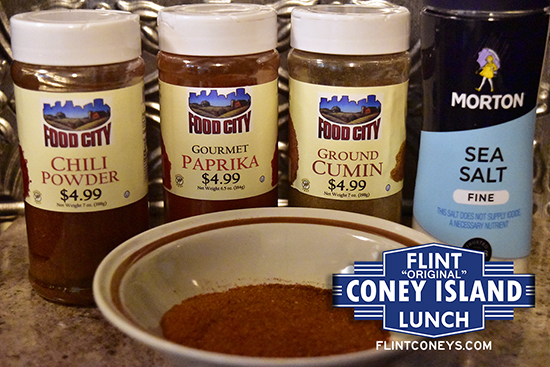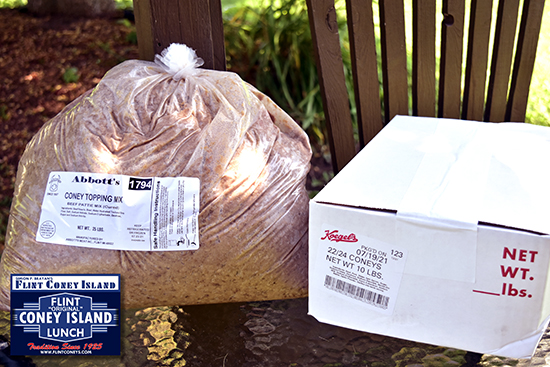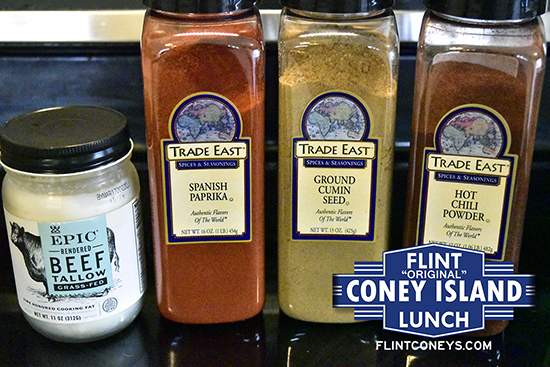
Related
Flint Coney Spice Blend
Creating the spice blend using more commonly-available spices. However, this is mild chili powder instead of hot. I discuss the differences between the hot and mild chili powders in this blog entry.
The basic spice blend for Flint Coneys is said to be equal parts chili powder, paprika, and ground cumin. However, there are differences to be had though for common variations of those spices, as well as the flavor of the completed sauce varying from one restaurant to the next. Here are a couple of blend sizes to start with. Adjust the ingredient amounts to your own taste, as the restaurants do.
For 1 lb of meat:
- 1-1/2 Tbsp chili powder, hot
- 1-1/2 Tbsp paprika or smoked paprika
- 1-1/2 Tbsp cumin, ground
- 1/4 tsp salt (optional)
For 25 lb of meat:
- 1-1/2 cup chili powder, hot
- 1-1/2 cup paprika or smoked paprika
- 1-1/2 cup cumin, ground
- 2 Tbsp salt (optional)
The Basic Restaurant Procedure
25 lb Abbott’s Coney Topping Mix, raw and unseasoned
1 lb beef tallow, lard, or shortening
1-1/2 lb finely-chopped onion
1-1/2 cup chili powder, hot
1-1/2 cup paprika or smoked paprika
1-1/2 cup cumin, ground
2 Tbsp salt (optional)
Melt the fat over medium-high heat. Saute the chopped onion until translucent. Add the Coney Topping Mix and the spices and stir well. Lower the heat and simmer 30 – 45 minutes, stirring occasionally.
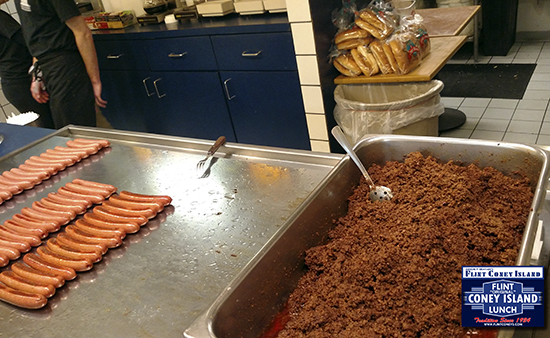
1 lb Abbott’s Coney Topping Mix, raw and unseasoned
2 Tbsp beef tallow, lard, or shortening
1/4 cup chopped onion
1-1/2 Tbsp chili powder, hot
1-1/2 Tbsp paprika or smoked paprika
1-1/2 Tbsp cumin, ground
1/4 tsp salt (optional)
Using Beef Tallow
A jar of beef tallow can be seen on the far left of the first image on this page. Opening that jar gives a strong waft of the wonderful smell of cooked brisket, which the tallow then adds to the finished sauce. Stories are told of beef suet or tallow being used in the original sauce beginning in 1925. Today those products are difficult to find, and can be rather expensive, with restaurants now using lard, shortening, or vegetable oil. But the tallow is a great throw-back to flavors of earlier times though, and in my opinion should be experienced at least once.
Beef tallow can be obtained at:
Tallow is made by rendering beef suet for hours. If you’d prefer to go that route, both suet and tallow are available at:
Using Yesterday’s Leftover Coney Franks
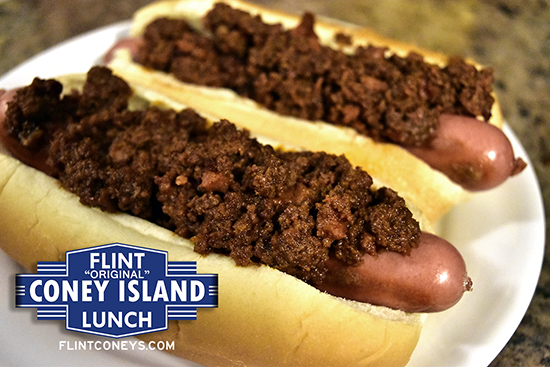
In examining the conjecture surrounding the folklore-ridden recipe containing ground hot dogs, and in considering that some earlier restaurants may have added chopped hot dogs to be frugal and not wasteful according to their Macedonian culture, a few facts emerge:
- The restaurants wouldn’t have ground fresh Koegel Coney Franks into their sauce, but instead would have used grilled Coneys leftover from the previous day.
- Grilling changes both the flavor and the texture, creating a more savory dish.
- As Abbott’s provided their Coney Topping Base to individual restaurants beginning in 1925, and as their menus were quite small, those restaurants likely wouldn’t have had a meat grinder among their equipment. They may have done the chopping with a couple of bench scrapers on a cutting board or the flattop.
The additional unseasoned meat would be cause to increase the amount of spices used in the sauce.
I then devised a simple recipe experiment:
- Grill 4 Koegel Coney Franks, the same number that appears in the recipe containing ground hot dogs. Refrigerate them as though for an overnight.
- Follow the basic procedure for making Flint Coney sauce, as above.
- Chop the grilled Coney Franks to the same consistency as the Flint Coney sauce.
- Add the chopped Coney Franks to the sauce.
- As the 4 Coney Franks are a total of about a 1/2 lb, add half-again the amount of spice as before, along with an additional 2 Tbsp of the fat to prevent the sauce from drying out.
- Simmer an additional 30 minutes.
The result ended up being quite good, as it was both familiar and something I would eat again.

